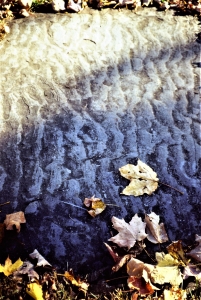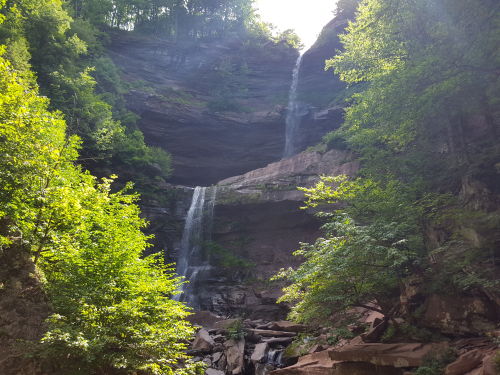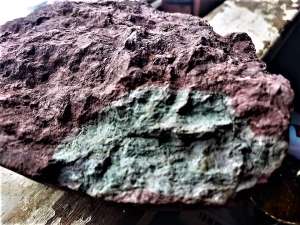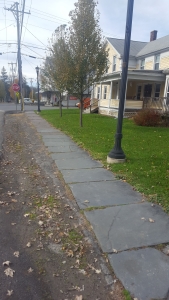Ripple Marks – 12-28-23
Ripple marks
The Catskill Geologists
Robert and Johanna Titus
A few weeks ago, we ran a column about bluestone sidewalks. Those are sidewalks composed of Catskill sandstones, quarried, cut and split to make slabs that make very fine sidewalks — at least they used to. When cheap, good quality cement came along the bluestone industry began a long slow decline. That’s too bad; bluestone is the stuff of good stories in geology.
We are going to talk some more about these things this week. We are going to talk about bluestone slabs and bluestone sidewalks – again. But this week, let’s pursue a different angle. There are bluestones and then there are bluestones. Some are just a lot more interesting than others; some tell some pretty interesting stories.
Take a look at our photo. It is a bluestone sidewalk slab from East Main Street in the village of Earlville, located a bit northwest of the Catskills and a bit southwest of Utica. This is not your typical bluestone slab; it is covered by some very striking features. They are called ripple marks. Ripple marks are identified when the surface of the bluestone is — well –rippled. Ripples are very low ridges on the surface of the rock. They are all parallel to each other. But there is more. Notice that the slopes of these “ridges” are asymmetric. The left sides display gentle slopes while the right sides are steep. Those are scientific clues, important clues about how they formed. That asymmetry tells us that the petrified sand which makes up the ripples, was deposited under the influence of currents.

These are called current ripples. They take us back to the Devonian time period, perhaps some 380 million years ago. Our region was, back then, part of something called the Catskill Delta. That was an enormous delta spread out below a great range of mountains that was located in what is today northern New England. Like any great delta, this one was crisscrossed by numerous streams, big and small. Each stream had currents, flowing downstream within them.
That gets us back to those ripples. The currents of those streams picked up sand and carried it downstream. Typically, much of that sand was moving across the stream bottom. It was also being sculpted by the currents into asymmetric ripples. The steep slopes faced downstream. In the case of our ripples from Earlville, downstream was to the right of the photo.
Now, don’t you see, our bluestone slab has become so much more interesting. It transports us to the bottom of a Devonian age stream, flowing across an ancient delta. The currents are not especially powerful, but they do move along at a clip strong enough to carry a lot of sand. Most bluestone slabs formed this way but, with this particular slab, the evidence is so much more convincing.
This slab was not alone; there were a number of them on that Earlville sidewalk. That allows us to read the mind of the man who built this. He must have had an inkling of what ripple marks were, and when he selected the slabs he wanted for his sidewalk, he had a strong preference for rippled ones. This is a work of art.
And that is how we would like you to start seeing these sidewalks. There aren’t all That many of them left. You should start becoming aware of them, especially the rippled ones.
Contact the authors at randjtitus@prodigy.net. Let them know where you have seen rippled sidewalks. Join their facebook page, “The Catskill Geologist.”



